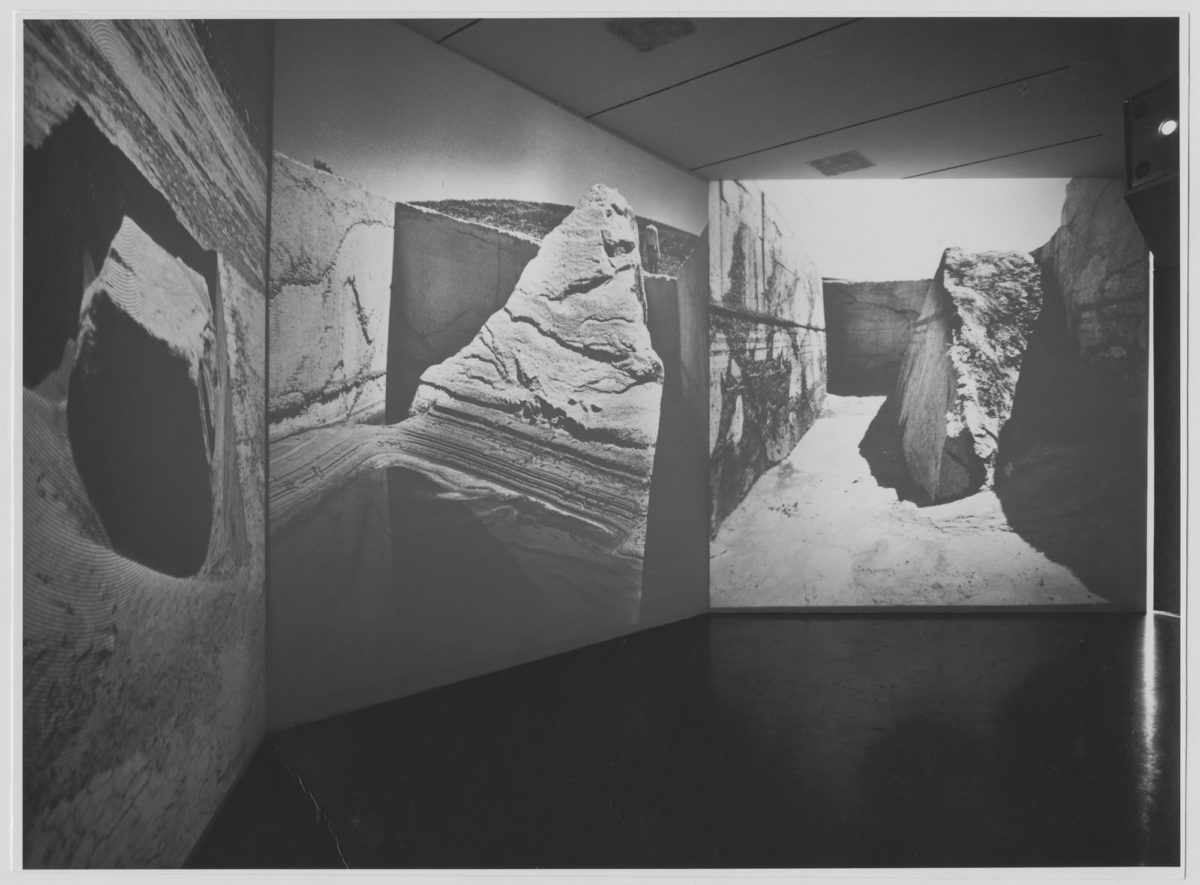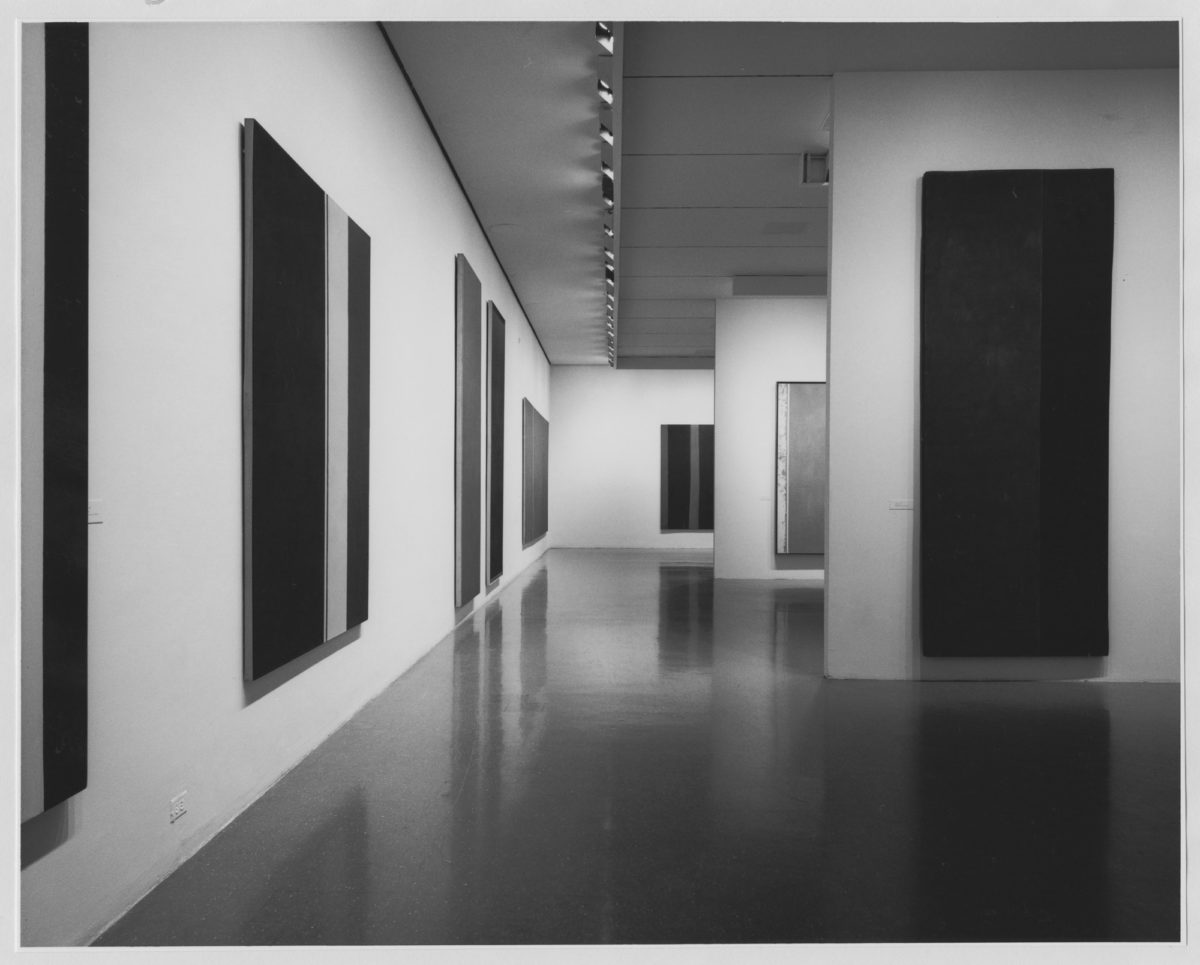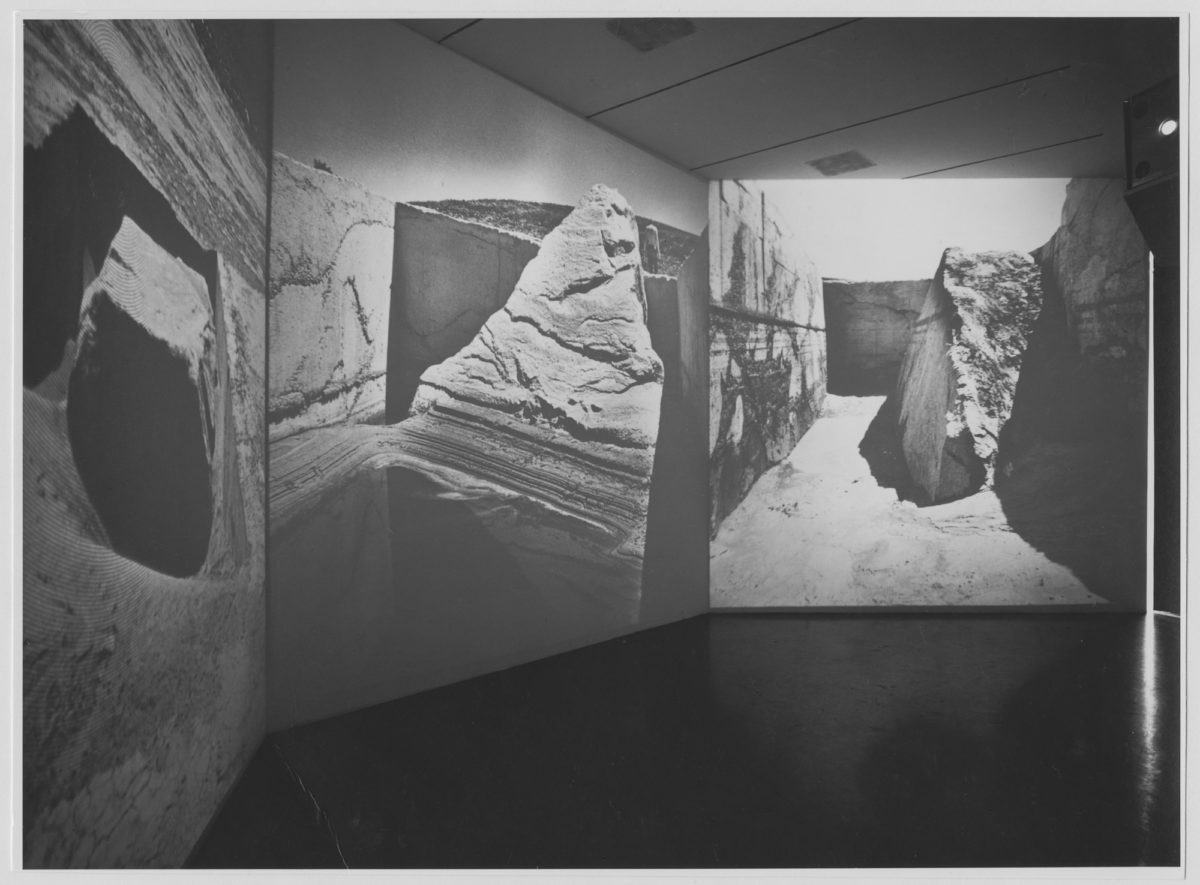[ad_1]

Installation view of “Information,” 1970, at Museum of Modern Art, New York.
COURTESY MUSEUM OF MODERN ART
The Museum of Modern Art in New York will reopen after a $450 million renovation and expansion on October 21, marking one of the most dramatic transformations in the institution’s long and storied history. In the run-up to the museum’s next incarnation, ARTnews is looking back to important exhibitions from MoMA’s past and offering excerpts from articles and reviews from our archives—moving decade by decade from the museum’s inauguration to the present day. The fifth edition in this series features seven shows from the 1970s at MoMA, including a group exhibition that ushered in a new wave of Conceptualist art and a Stephen Shore outing that helped cement color photography as an artistic form of expression.
Frank Stella
March 24, 1970–June 2, 1970
The show: When Frank Stella became the subject of this exhibition, he was just 33 years old. He remains the youngest artist to ever receive a MoMA retrospective. The show included more than 60 paintings and drawings, including the work that is often considered Stella’s masterpiece, “Die Fahne Hoch!” (1959), which had figured also figured in 1959’s “16 Americans,” a classic show in MoMA’s exhibition history. Though critics had once considered Stella’s abstractions radical and new, some reviewing the exhibition said that they had begun to sour on his art, alleging that it had lost its edge.
What ARTnews said: “It is not too surprising that the Stella exhibition, organized by curator William Rubin, should come as a mixed blessing. This has nothing to do with the obviously vital questions posed by the show about Stella himself. As an artist Stella has been intelligent, consistent, relevant, prolific, highly influential and has turned out a body of work which has been, at least in terms of the issues it dealt with, close to the heart of much of the most serious painting and sculpture of the 1960s. Yet not only are there few surprises or insights forthcoming from the current presentation, but—more disturbing—it does not entirely sustain our recollections or expectations of provocation and profundity.” —Elizabeth C. Baker
“Information”
July 2, 1970–September 20, 1970
The show: This game-changing group show curated by Kynaston McShine, who died earlier this year, focused broadly on new modes of communication and is widely viewed as one of the most important Conceptual art shows of all time. “Information” generated a number of important artworks, including, perhaps most notably, Hans Haacke’s famed MoMA Poll (1970), in which visitors were asked to share whether they would be willing to vote for New York Governor Nelson Rockefeller, a board member who had controversially supported the Vietnam War. With its emphasis on data and information over aesthetics and visual pleasure, the exhibition was perceived during its time as a welcome shock.
What ARTnews said: “If Action Painting apologized about the cracks in the carpet (the sidewalk), and the minims argued for three years about the accent in the ‘of’ in the phrase ‘the mother of John Ruskin,’ then these young men have lightened the accent, and we are very thankful that they have. But if Expressionism was a flight into illness, and Pop had a watery relationship with its unconscious, and if Minimalism was the insertion into the uterus, then these young men had better leave a string, to get out!” —David Shapiro

Installation view of “Barnett Newman,” 1971, at Museum of Modern Art.
COURTESY MUSEUM OF MODERN ART
Barnett Newman
October 21, 1971–January 10, 1972
The show: When Barnett Newman died in 1970, many felt that a giant of the New York art world had been lost. A little more than a year after his death, MoMA opened the first retrospective for the artist, who was best known for his pared-down abstractions, many of them featuring large color fields bisected by thin vertical lines that Newman called “zips.” A press release for the show billed Newman as “one of the most original and influential of the band of artists that emerged in the decade after World War II.” To mark the show, ARTnews asked a spread of artists, including Dan Flavin, Lee Krasner, and Tony Smith, to respond to Newman’s work.
What ARTnews said: “When I saw Newman’s show at French & Co. in 1959, I thought the paintings were good but I was kind of critical of him because of the geometry which I think was probably the problem Barney got into with everybody in the ’50s. I think people misread that geometry. I misread it too.” —Donald Judd
Marcel Duchamp
December 28, 1973–February 24, 1974
The show: Following a short delay caused by a strike led by a MoMA workers’ union, the museum opened the first Marcel Duchamp retrospective to ever be staged in New York. With more than 200 works on view, the show, which opened first at the Philadelphia Museum of Art and later traveled to the Art Institute of Chicago, was a rare glimpse at the full of the Dadaist’s art, whose influence could be felt everywhere in the years following his death.
What ARTnews said: “Like a law of his own ‘amusing physics,’ Marcel Duchamp’s role in the development of 20th-century art reversed the normal succession of events attendant upon the creation of a significant body of work…. Among the major artists of the 20th century, he seemed to offer the most viable alternatives to the emphasis on self-expression through the handling of paint that culminated in Abstract-Expressionism in the U.S. and the various manifestations in Europe. Duchamp had broken through all the categories—physical, technical, and esthetic—that had hitherto stratified the art world.” —John Tancock
“Photographs by Stephen Shore”
October 8, 1976–January 4, 1977
The show: At a time when many were just beginning to understand how photography could be art, MoMA took the daring step of showcasing work by Stephen Shore, whose pictures, shot during travels across America, departed from the old paradigms set down by the medium’s pioneers. Most notably, they were done in color, a style thought by many to be the stuff of fashion photography and advertising. In a press release, Shore was billed as being part of a “new generation” that had been raising color photography to the status of art. Critics, however, were suspicious.
What ARTnews said: “Stephen Shore’s photographs at the Museum of Modern Art raise a serious question for modern photography: what is the photographer’s contribution as compared to that of the popular artist who provides him his subject. Is it ‘Shore as photographer’ we really like, or simply the designer of the movie marquee he photographs, the signmaker of the fruit stand, the architects and planners who allowed a huge purple glass building to be juxtaposed with a California bungalow?” —Phil Patton

Installation view of “Robert Rauschenberg,” 1977, at Museum of Modern Art, New York.
COURTESY MUSEUM OF MODERN ART
Robert Rauschenberg
March 25, 1977–May 17, 1977
The show: Around two decades after Robert Rauschenberg altered the course of art history with his “combines,” assemblages that bridged the gap between painting and sculpture through the use of ready-made objects, MoMA gave him a full retrospective, with 150 artworks included. In its press materials, the museum billed him as “the most innovative, prolific, and audacious artist since Picasso,” and it brought on big curatorial talent to go alongside such a great—Kynaston McShine oversaw the MoMA presentation of the show, which was originally organized by Walter Hopps for the National Collection of Fine Arts in Washington, D.C.
What ARTnews said: “In work after work, Rauschenberg shaped visual monuments that stayed fixed in the mind through the very peculiarity and immediacy that gave them life. His vision is such that the everyday—a crumpled scrap of paper, a photograph, a newspaper headline, a postcard, a rusty bucket, a door or, indeed, a stuffed goat—becomes transmuted into an expressive metaphor, the meaning of which is as elusive as it is somehow charged with clarity and myriad inner meanings.” —John Gruen
Sol LeWitt
February 3, 1978–April 4, 1978
The show: Though “Information” seemed to usher in a new age at MoMA, it would be eight years before the museum would give a Conceptual artist a full-scale museum show. The first to receive that honor was Sol LeWitt, whose experiments with Minimalism, mathematics, and Russian avant-garde aesthetics were showcased through nearly 150 drawings, sculptures, and photographic pieces.
What ARTnews said: “Conceptual art has arrived. Or has it? It has been around for something like a decade, but with the first full-length retrospective at the Museum of Modern Art by one of its foremost exponents, Sol LeWitt, the phenomenon (‘movement’ implies a shared effort, which is not the case) has been give an official seal of approval. Most critics have had trouble with conceptual art in the past, along with most of the public. It was simply too dry, too cerebral and ‘anti-aesthetic’ to satisfy even liberal requirements for an artistic statement. Now, with a certain sense of relief, they have caught conceptual art by the tail through LeWitt, in whom has been discovered the apotheosis not only of Mondrian, Seurat, Constructivism and other European manifestations of ‘scientifically’ inspired art, but also American Abstract Expressionism, Pop and formalist thinking of the ’50s and ’60s.” —Ellen Schwartz
[ad_2]
Source link

